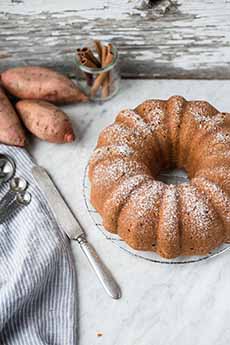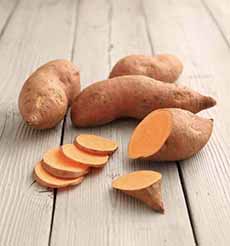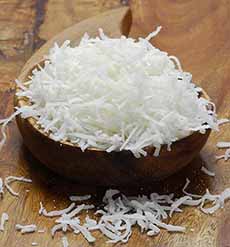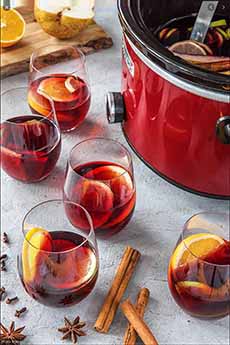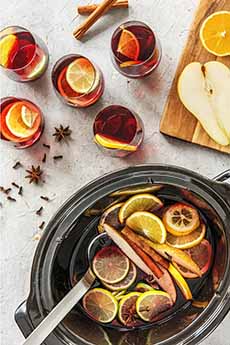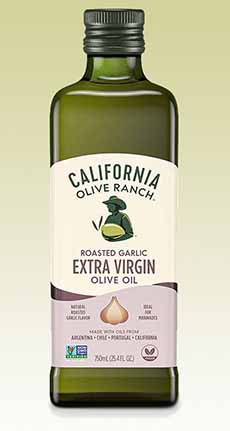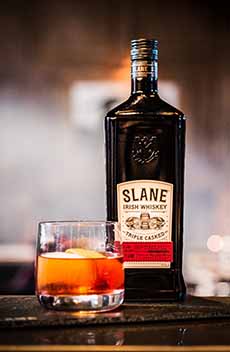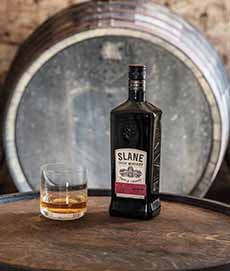|
The Saucy Ladies have created a line of deliciously crunchy, old-fashioned kettle chips.
First, let’s take a minute to compare kettle chips—the original potato chips—to the modern, continuous-process chips.
WHAT ARE KETTLE CHIPS?
As their name might suggest, what we now call “small batch” potato chips were originally cooked in a large kettle.
The term “kettle” is relative.
The original kettle is a pot made for boiling or stewing food, that would be found in a home kitchen.
Over time, the kettles were made in larger sizes to feed larger audiences. For commercial production, it became a large vat.
The term cetel appears in Old English before 900 C.E., derived from the Latin catīnus, a food vessel.
Potato chips as we know them—thin slices of potato fried to a crisp crunch—were not invented until 1853—and then not intentionally (the history of potato chips).
To make chips, the potato slices were added to a kettle (vat) of boiling oil on a stove. When the batch was done cooking, the chips were removed and a new batch of potato slices was added.
The potato chips made in a pot on your own stove are also kettle chips.
The continuous fryer was invented in 1929. A continuous stream of potato slices was moved through a current of oil.
This created tremendous economies of scale and drove most of the small kettle cookers out of business. By the 1940s, automation had evolved to change much of America’s artisan food production into mass production, including potato chips.
Here’s more about the difference between kettle chips and continuous fryer chips.
Here’s how continuous processing changed potato chips:
In the continuous-processing method, the oil is kept consistently hot.
The moisture in the raw potato slices thus evaporates immediately, making the chip light, crispy and finely textured.
Old-fashioned batch processing creates the opposite result.
Because the temperature of the oil drops when each new batch of potato slices is added to the kettle, the potatoes take slightly longer to cook.
This gives the starch in the potatoes time to absorb moisture, resulting in a thicker and sturdier chip, with a deeper, caramelized flavor.
We’ll take small-batch kettle chips over continuous fryer chips every time!
THE SAUCY LADIES KETTLE CHIPS
The Saucy Ladies kettle chips took their brand name from the first flavors, which used spices that emulated classic pasta sauces: Arrabbiata, Five Cheeses, Marinara, and Tomato Basil.
Why? Sharon Straci, the founder of The Saucy Ladies, spent more than two decades creating pasta sauces for commercial use.
The “sauce” flavors were joined by Old Fashioned With Sea Salt, Sweet & Salty and Truffle, for a total of eight flavors.
We were pleasantly surprised by Sweet & Salty. The sweetness is caramel flavor—a “salted caramel” potato chip.
In fact, we’d call it a “dessert” chip.
Of course, you can nibble on them anytime. But serve them with a sweetened ricotta dip (like cannoli filling) for a sweet treat.
GET YOURS!
The chips are sold in two-ounce and six-ounce bags, and can be purchased on the website in:
2-ounce size, 6 or 30 bags
6-ounce size, 3 or 12 bags
You can build your own box, selecting your flavors of choice.
These are great gifts for chip lovers, too.
There are also gift certificates.
Get yours at SaucyLadiesUSA.com.
> THE HISTORY OF POTATO CHIPS
> THE HISTORY OF THE POTATO
|
|

[1] Kettle chips—the original potato chips—are a bit thicker and a lot crunchier (photo © Mazza | Panther Media).

[2] In addition to the classic, simply-salted “Old Fashioned” kettle chip, there are seven more flavors. All are available in 2-ounce (above) and 6-ounce bags (below—photos #2 through #5 © The Saucy Ladies).

[3] The Truffle flavor is very lightly truffled—not intense like some other brands we’ve tasted.

[4] Like heat? Try the Arrabbiata flavor, named after the pasta dish made with crushed red chili flakes.

[5] Our idea of a “dessert” chip: It’s the chip version of salted caramel.
|
